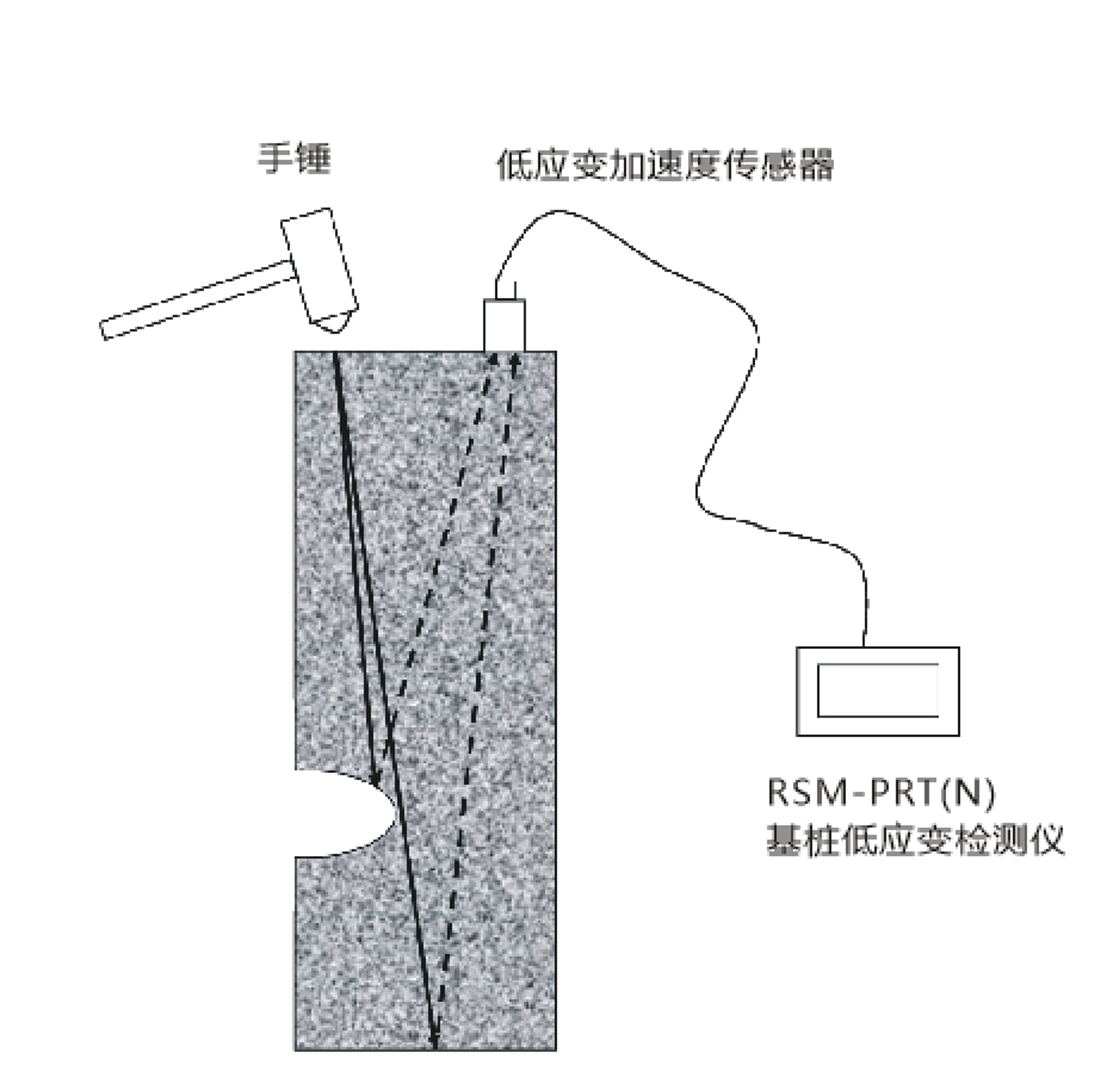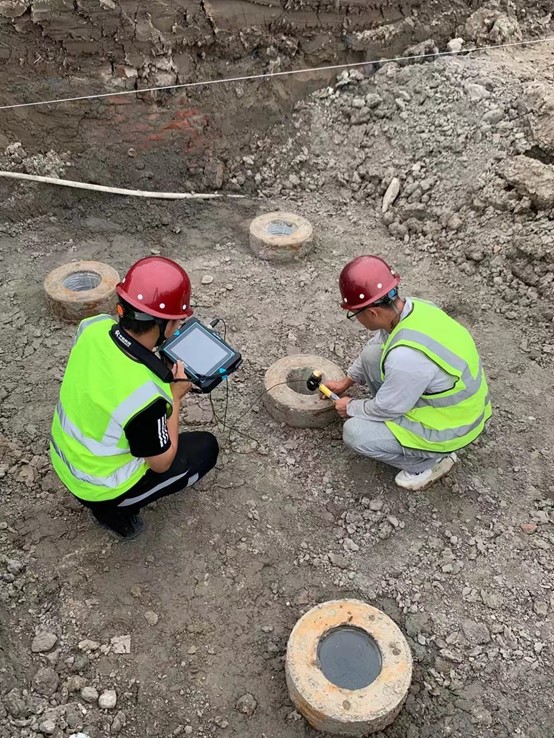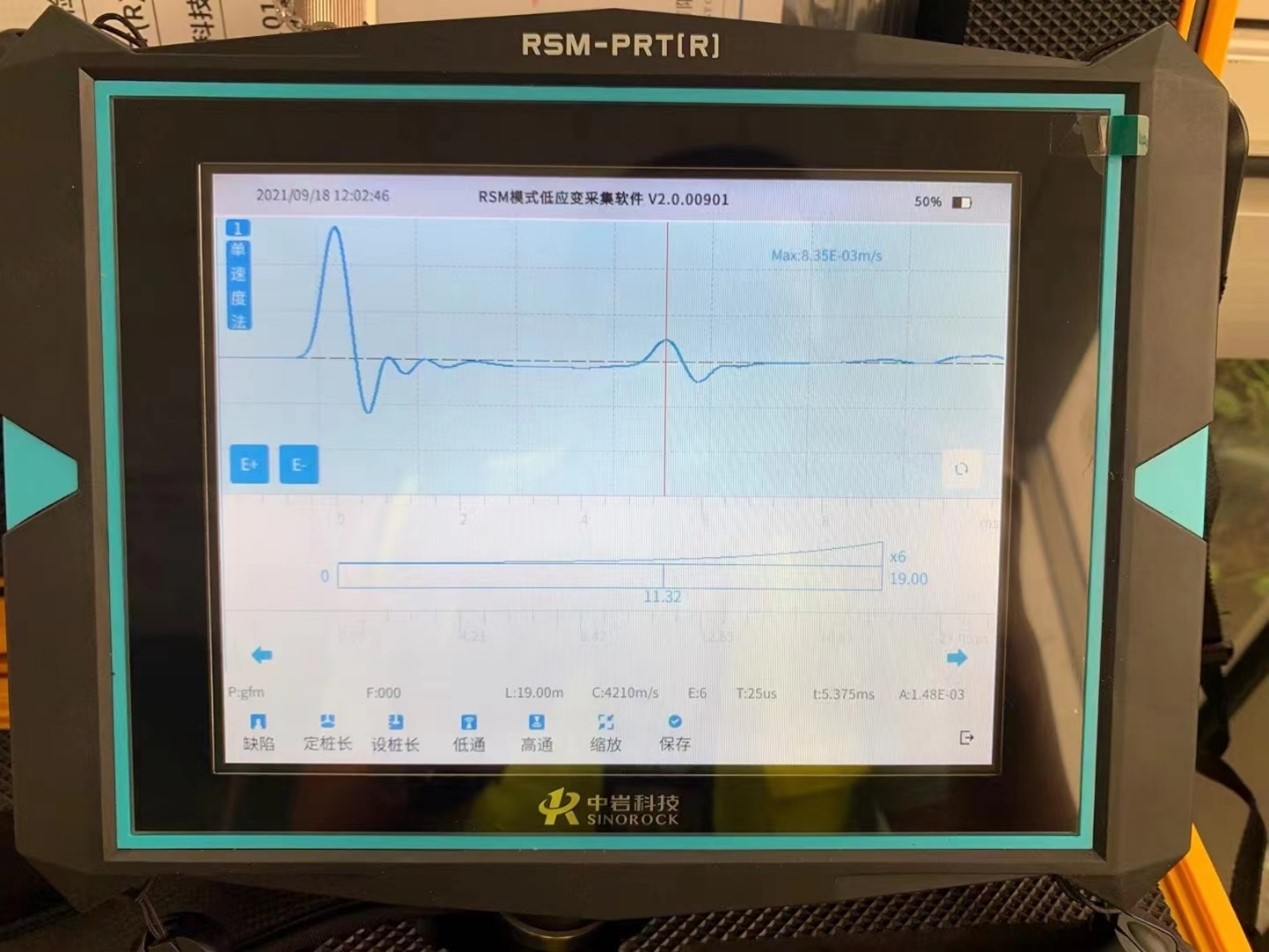Application of Low Strain PIT Reflected Wave Method in Pile testing
The application of low-strain detection technology has greatly improved the testing efficiency of foundation piles. PIT test is to analyzes the integrity of the pile body by applying a dynamic load on the top of the pile and collecting the response signals of the pile foundation and soil system.
In the PIT test, hand hammers or force hammers are generally used to strike the top of the pile to provide downwardly transmitted stress waves for the pile body. When the stress wave passes through the wave impedance change interface, part of it will be reflected and propagated back, and the other part will continue to transmit until the bottom of the pile, and reflect upward at the bottom of the pile. The reflected signal is received by the acceleration or velocity sensor on the top of the pile. After amplification and output analysis, the impedance change of the stress wave during the propagation process can represent problems such as pile body defects and concrete strength, while the reflected signal from the pile top can help us to accurately analyze the pile length. Low strain detection technology is widely used in pile foundation test. This technology gives full play to its advantages of high efficiency and good precision. one of the common methods.

Problems with Low Strain Detection Technology
Although PIT test can help testers to judge pile quality, concrete strength grade and pile length, this technology also has some problems and deficiencies in practical applications because it obtains approximate results through the analysis of reflected wave change curves.
1. Unable to complete the task requirements of quantitative analysis.
2. The testing work requires a lot of experience and data analysis ability.
3. The measurement accuracy is greatly affected by the pile length and geological conditions.
Data collection

In the process of data collection, it is necessary to do a good job in the selection of the source and sensor, the installation of the sensor and the use of the force rod, and the selection of the signal. In the source selection, the method of choosing a small hammer for small piles and a sledgehammer for large piles is generally used, so as to accurately collect the reflected signals from the bottom of the pile.
Data analysis and processing

Data processing is a key stage in judging the quality of foundation piles. In the data processing stage, the pile body conditions represented by different waveforms should be well grasped. Generally speaking, if the waveform is complete and smooth, it means that the quality of the construction pile body is good, and if the waveform fluctuates greatly at the head and tail, it generally means that there is a certain problem in the quality of the pile.
In summary, the application of low-strain detection technology in foundation pile test has greatly improved the efficiency and accuracy of pile foundation testing. As a relatively high-efficiency pile foundation detection method, PIT test has excellent performance. Promote application value and use space. It is believed that with the continuous development of low-strain PIT testing, this technology will greatly improve the accuracy and efficiency of pile quality test, and make greater contributions to the application and development of pile foundations.


